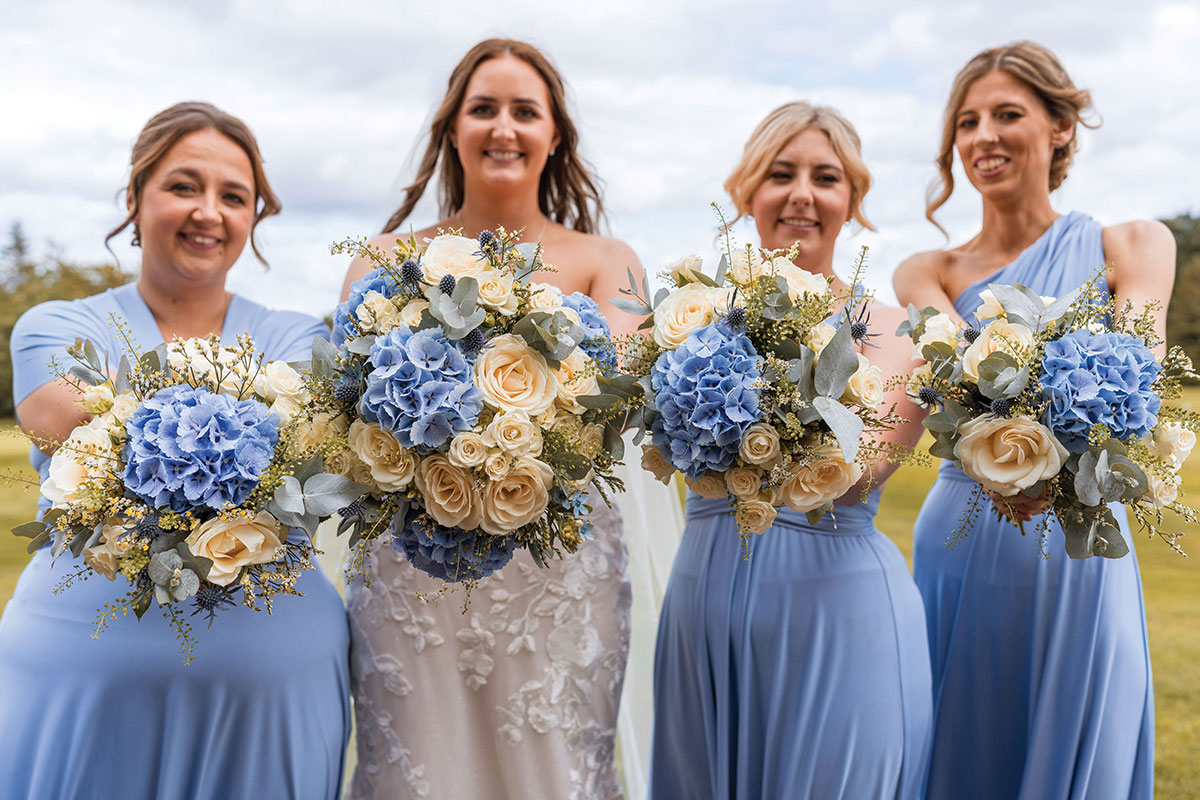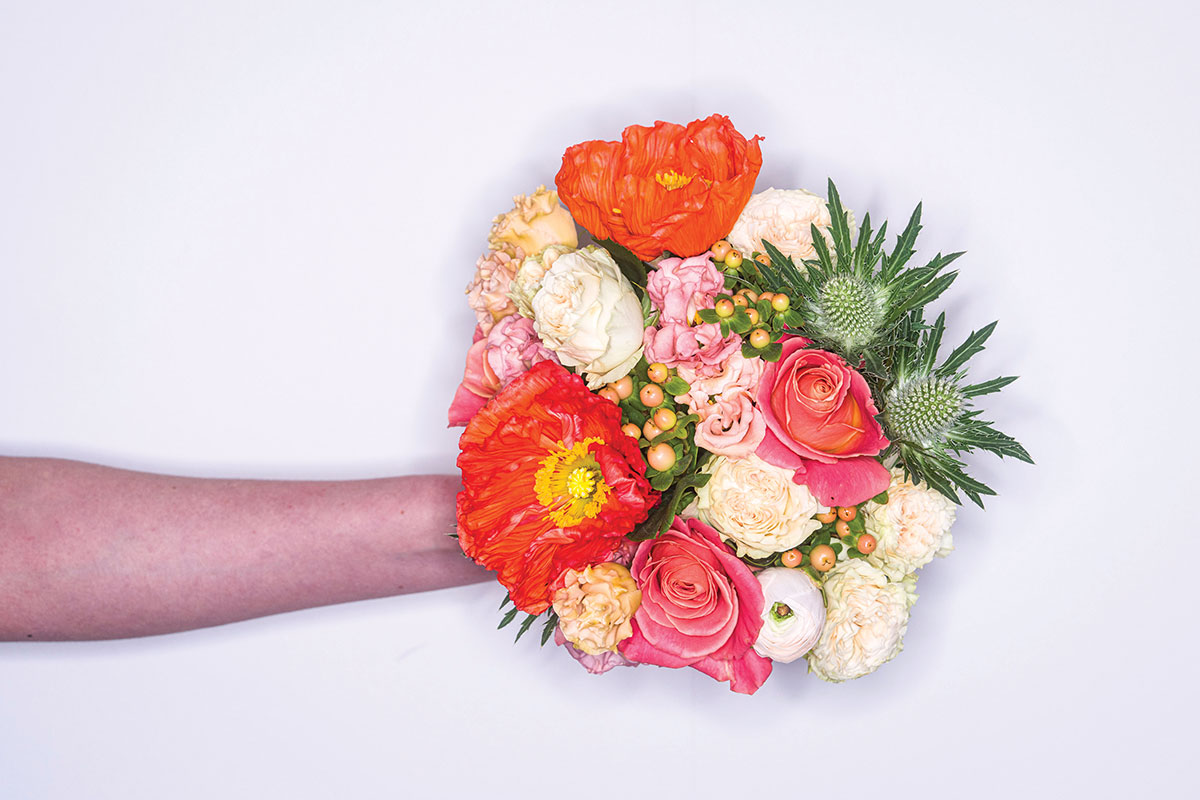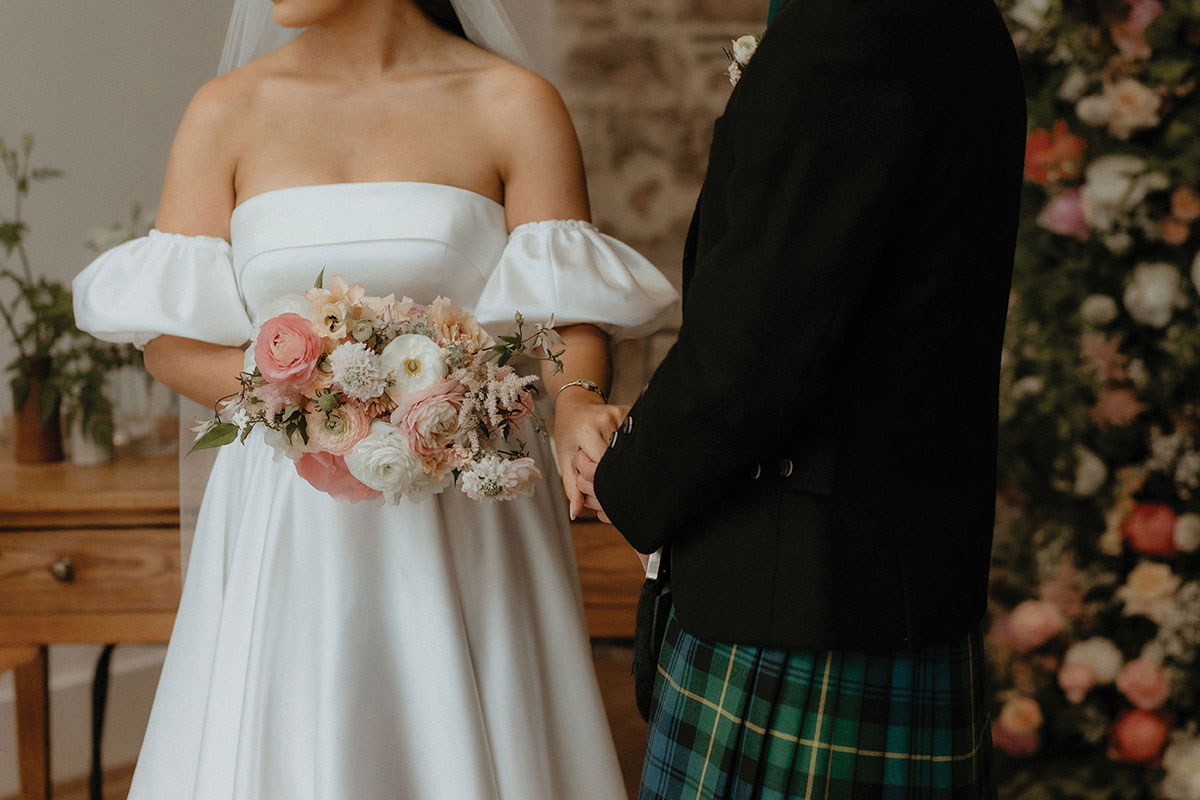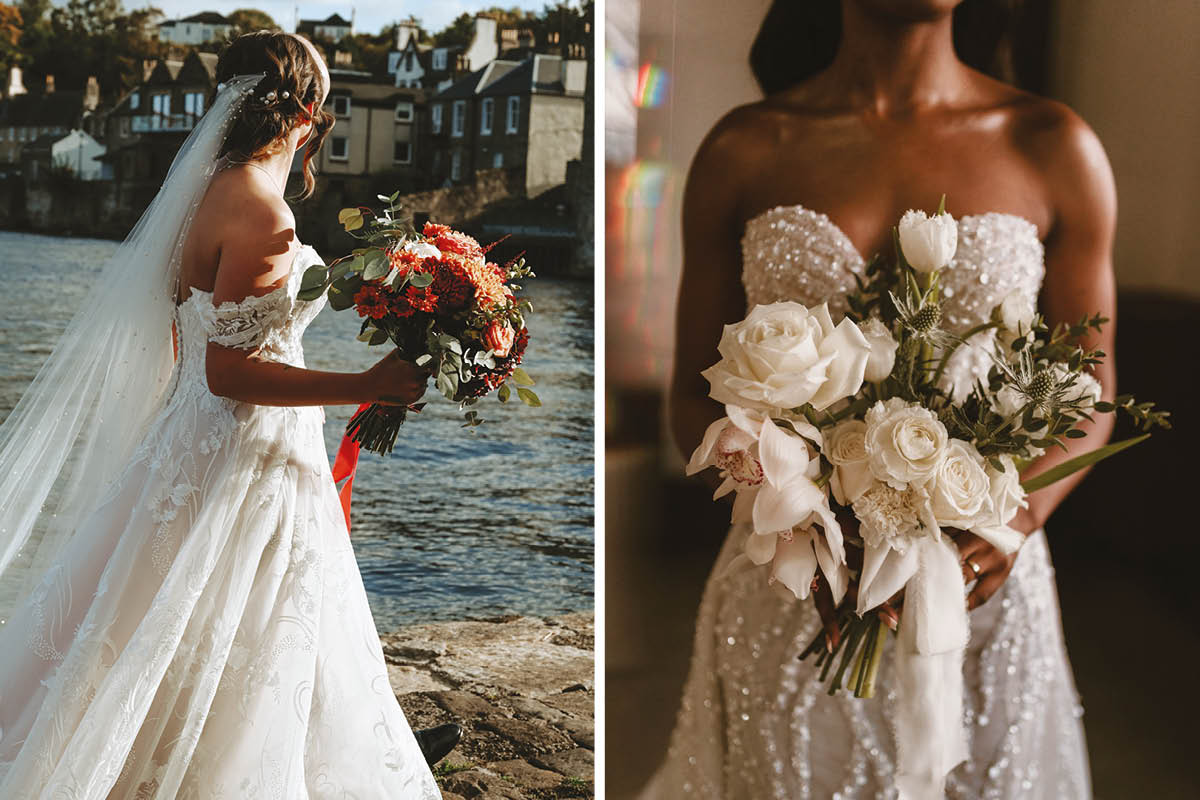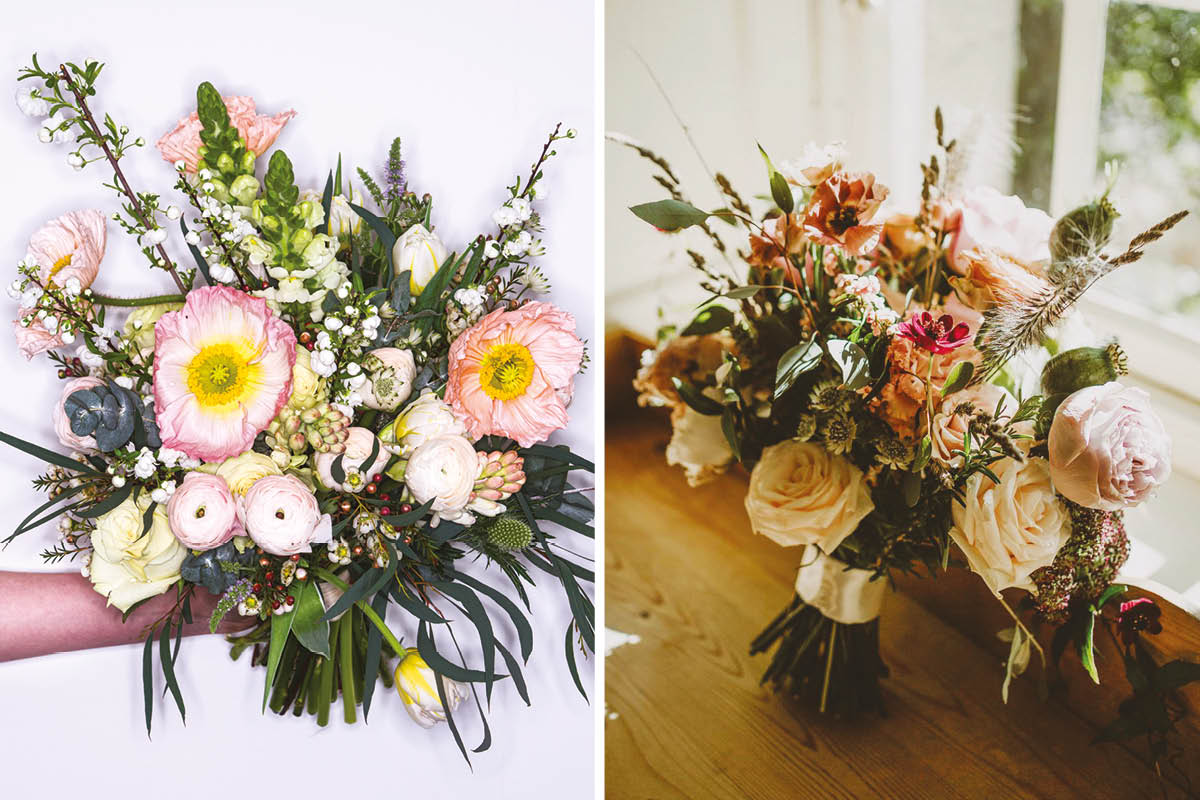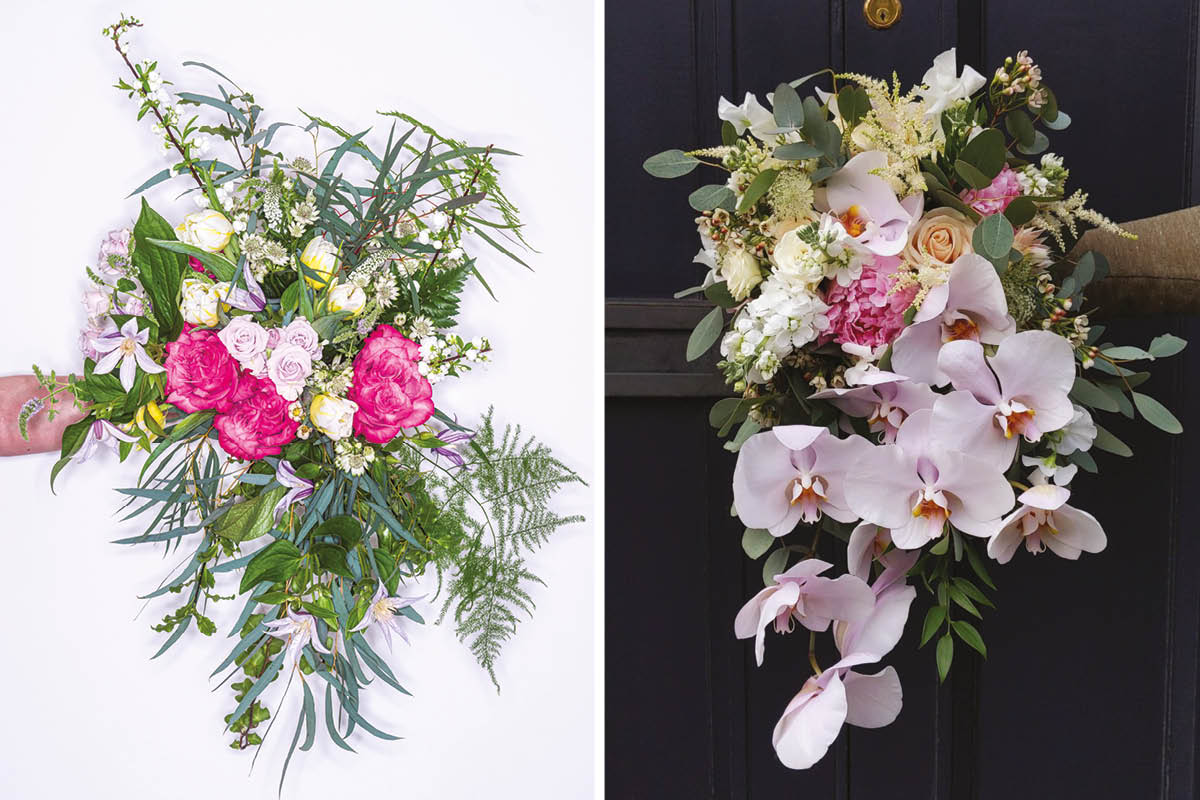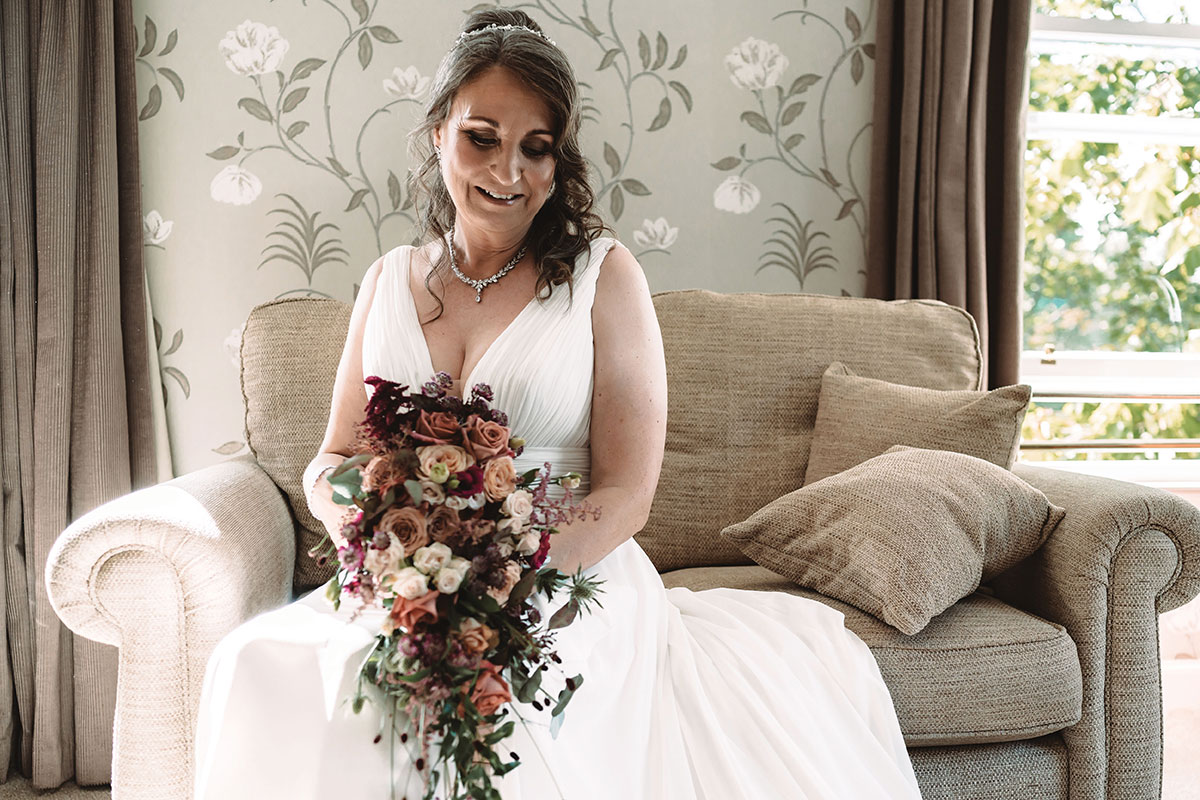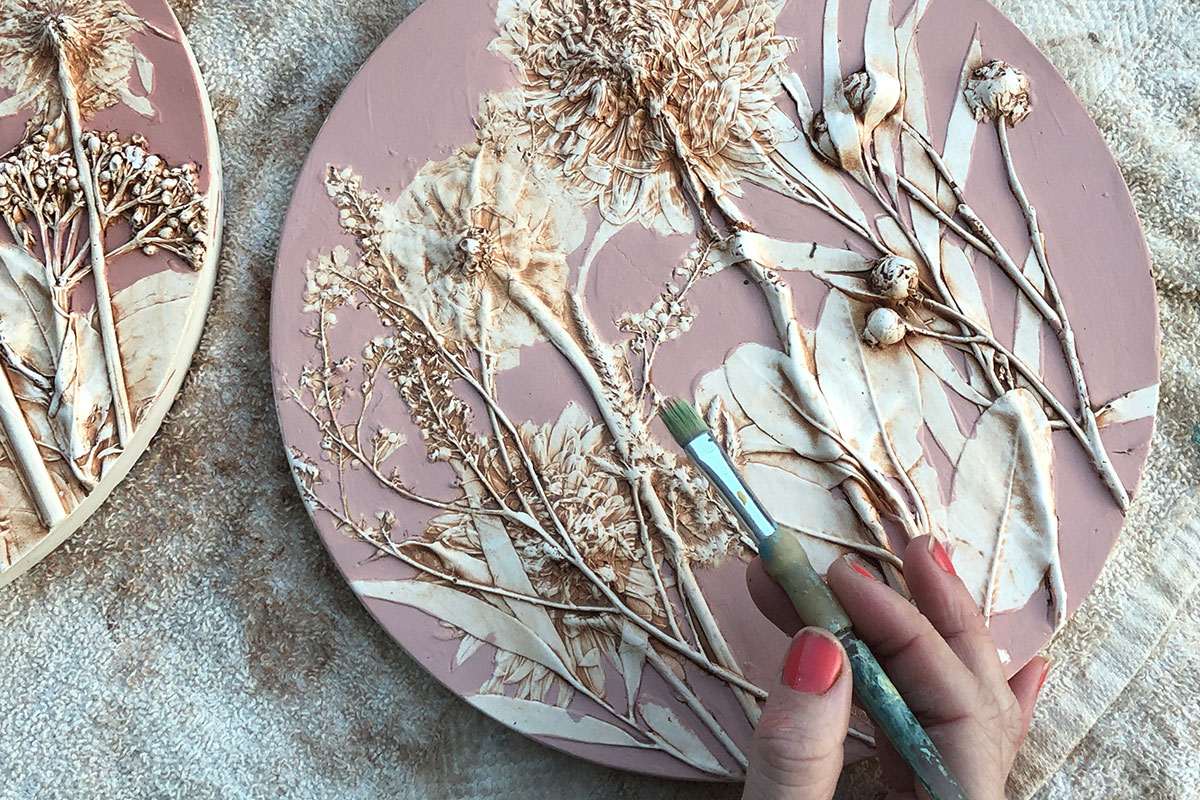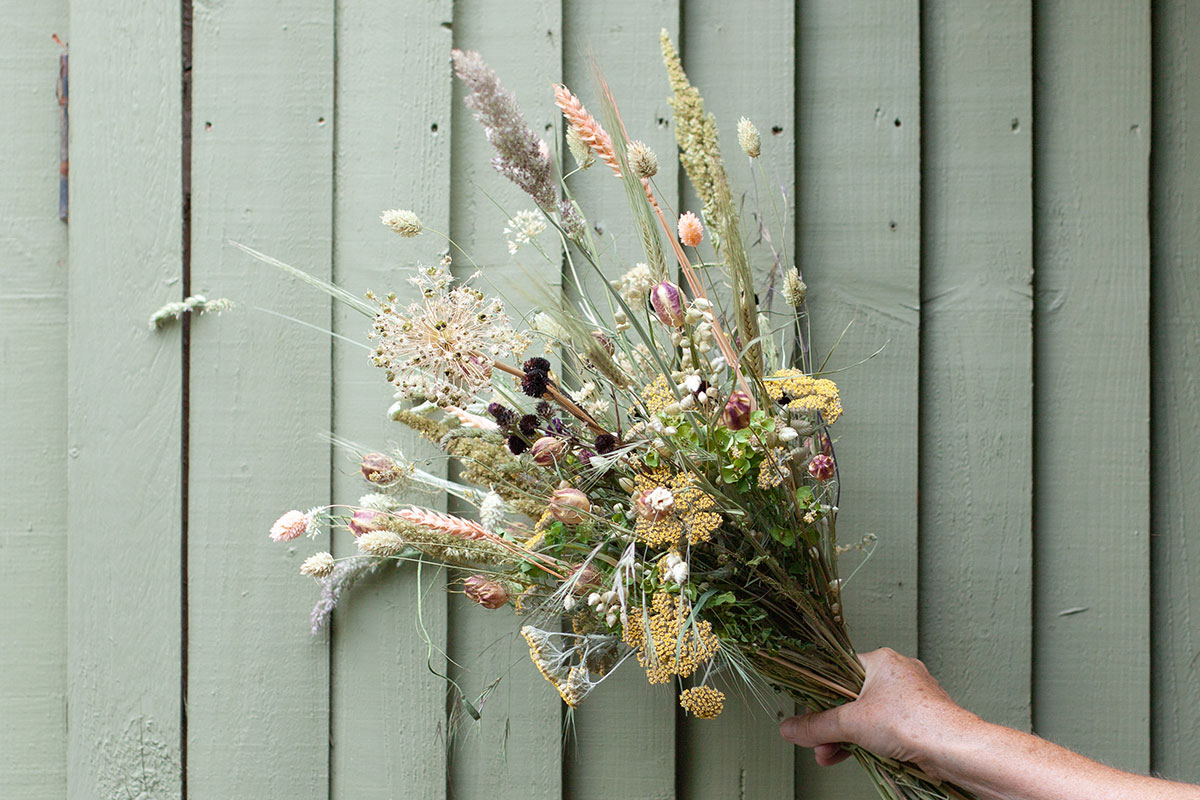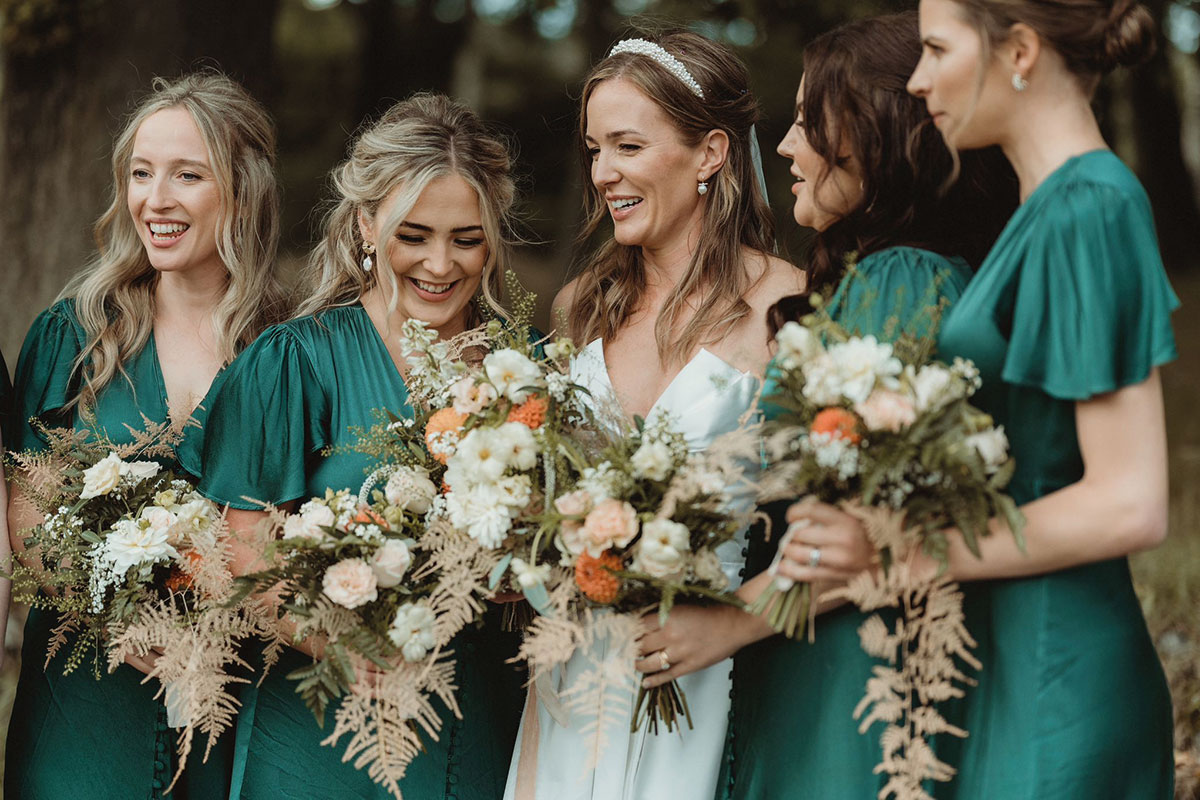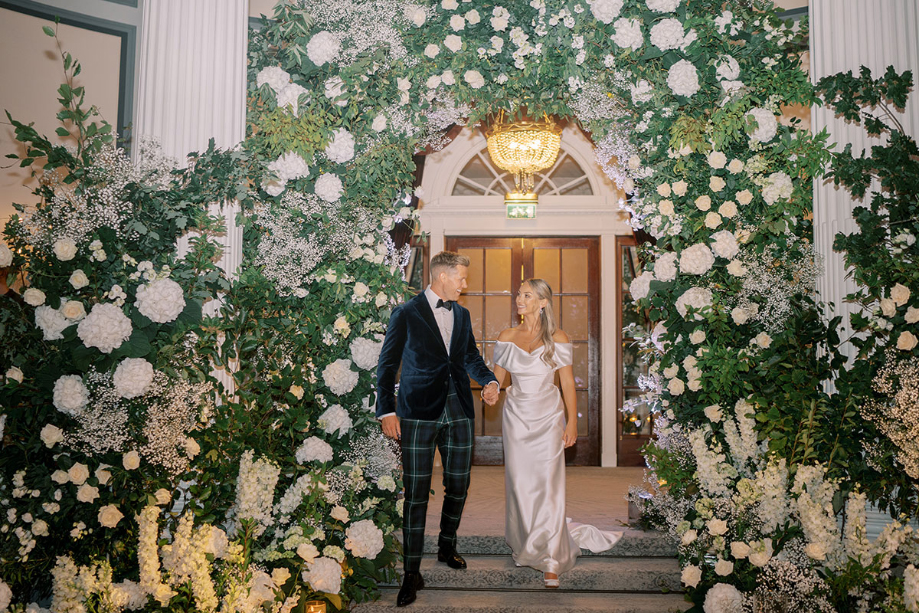The options for styling and shaping bridal bouquets have blossomed over the past few years. Read along as the floral experts plant their seeds of inspiration, ready to help your own ideas grow
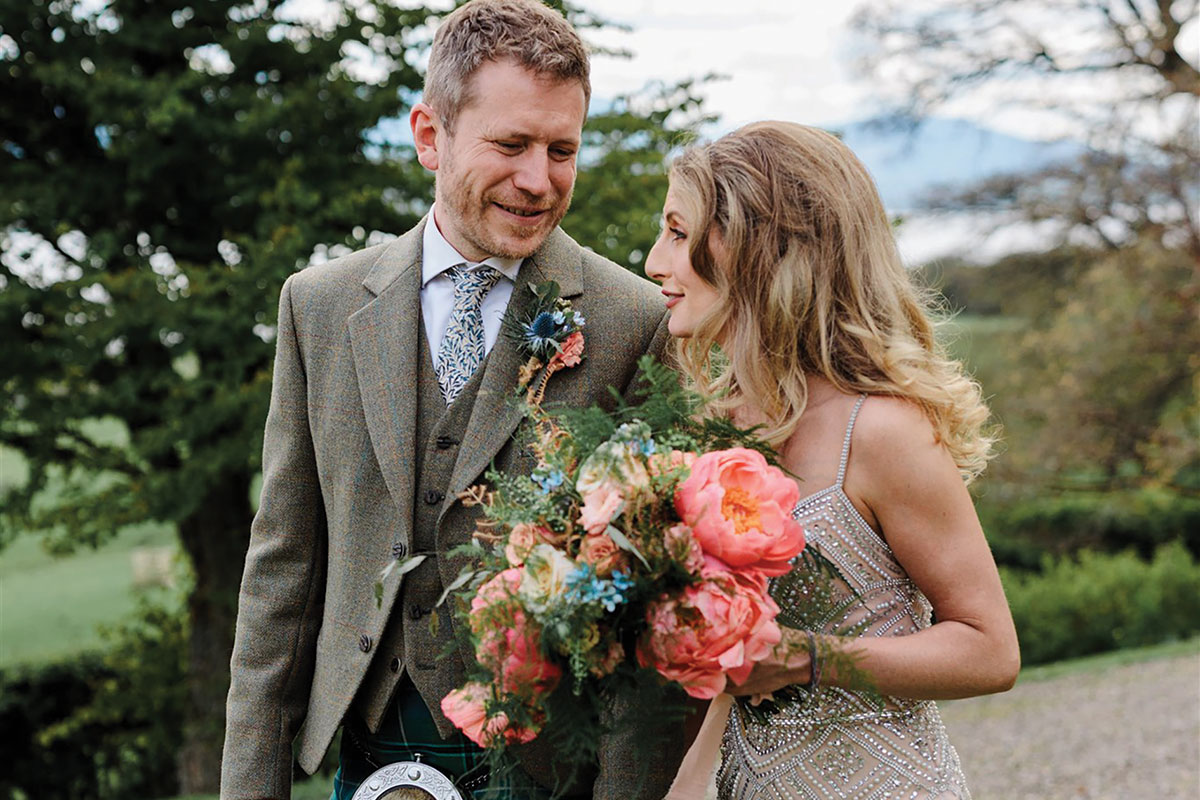
Linda Byers and Dougie Flower co-own Perth florist Terra Botanica so of course their floral choices were stunning on their own wedding day! Linda’s gorgeous cascading bouquet featured cappuccino roses, coral charm peonies, blue oxypetalum and more, and tied in beautifully with Dougie’s buttonhole (Photo: Ruth Segaud Photography)
Round & polished
Though this style tends to feature more frequently on a smaller scale, Fiona Hay of Edinburgh-based Flowers by Fiona Hay explains that this by no means reduces its wow-factor, it’s simply letting other bridal details take centre stage.
“If a client’s wedding dress is very ornate and detailed, we may want to opt for a smaller or simpler bouquet in order to not cover the delicate dress,” she says. Linda Byers of Perth-based Terra Botanica says that the same thought goes for shorter or frilled dresses and jumpsuits.
Plus, if you have a favourite flower, Linda adds that you may also consider one bloom en masse: “a bouquet filled solely with the most beautiful garden roses, anemones, or peonies can be stunning.”
Asymmetric & wild
“A little more wild and unruly in nature” is how Kelly Vaughan-Clinkscale of Borders-based Wildflower and Willow describes asymmetric bouquets.
The style has, according to Louise Davies of Glasgow’s Braw Blooms, been an “incredibly popular request at the moment, with lots of brides looking to make a statement, varying both shape and colour with a real mix of floral types – including larger headed blooms and taller stems”.
Kelly elaborates on Louise’s point saying: “The shape is often defined by the stems themselves as they are built into the bouquet. As a natural product, flowers aren’t perfect, so building bouquets in this way allows us to work with the blooms, rather than against them, to create something beautifully unique.”
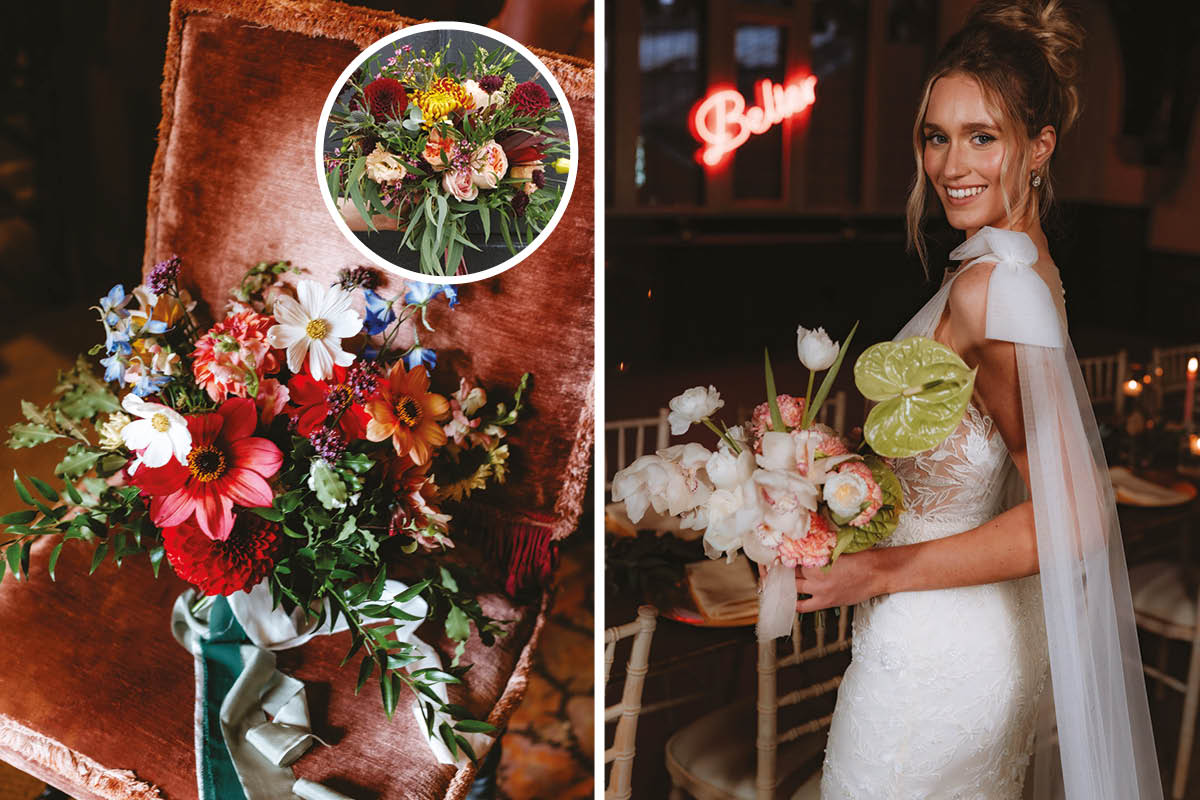
Asymmetrical and wild bouquets by Wildflower and Willow (left, photo: Miranda Stokkel Photography), Flowers by Fiona Hay (top left) and Braw Blooms (right, photo: Anna Laska Weddings)
Translating moodboards and ideas into reality is a tough ask, but these Scottish florists do it with ease. These real brides tell us how wedding florists brought their visions to life
Relaxed & natural
For Suzy Burnett of Flower Study Weddings in Dunfermline, the most popular style of bouquet she makes for brides is “a loose, hand-tied posy shape” as she says “it suits everyone in style and we can adjust the size to the individual bride”.
Kelly of Wildflower and Willow explains that for this rounder-in-shape style, “flowers and foliage are placed into the hand at an angle and the bouquet rotated to create the spiral shape. There is generally no front or back to it.”
Before she begins, Suzy spends time understanding ‘the vibe’ each of her brides likes, whether that be romantic or rustic, and tailors this to reflect in the overall composition of the posy.
Linda of Terra Botanica adds that with this style there’s wider scope for combining flower shapes: “So pointy flowers like delphinium, snapdragons and foxglove (that would look out of place in a tighter rounder posy) work really nicely.”
Cascading & trailing
“Gone are the days of cascading bouquets being limited to a tight teardrop bouquet,” says Linda of Terra Botanica, “instead, think trailing greens, lots of movement, and flowers that spill from your hand as far as you like.”
Elaborating on the practicalities of the arrangement, Linda sets the scene for why a bride might be drawn to the front-facing style: “These are fantastic with a figure-hugging dress, as the simple lines are a great backdrop to a tumbling, trailing bouquet. This shape really lends itself to a colour scheme of fresh whites and greens, pastels, blush tones, and soft lilacs with whites and greens. It’s especially suited to romantic, garden-style weddings.”
Similarly, Fiona of Flowers by Fiona Hay says that when she is designing an arrangement, the outcome is highly dependent on “what the client likes or is drawn to, and this almost always complements their chosen venue”. “Couples who’ve booked a rustic barn venue tend to prefer a wild, natural style, while those who marry at a glamorous hotel or castle tend to opt for a more structured style,” she notes.

